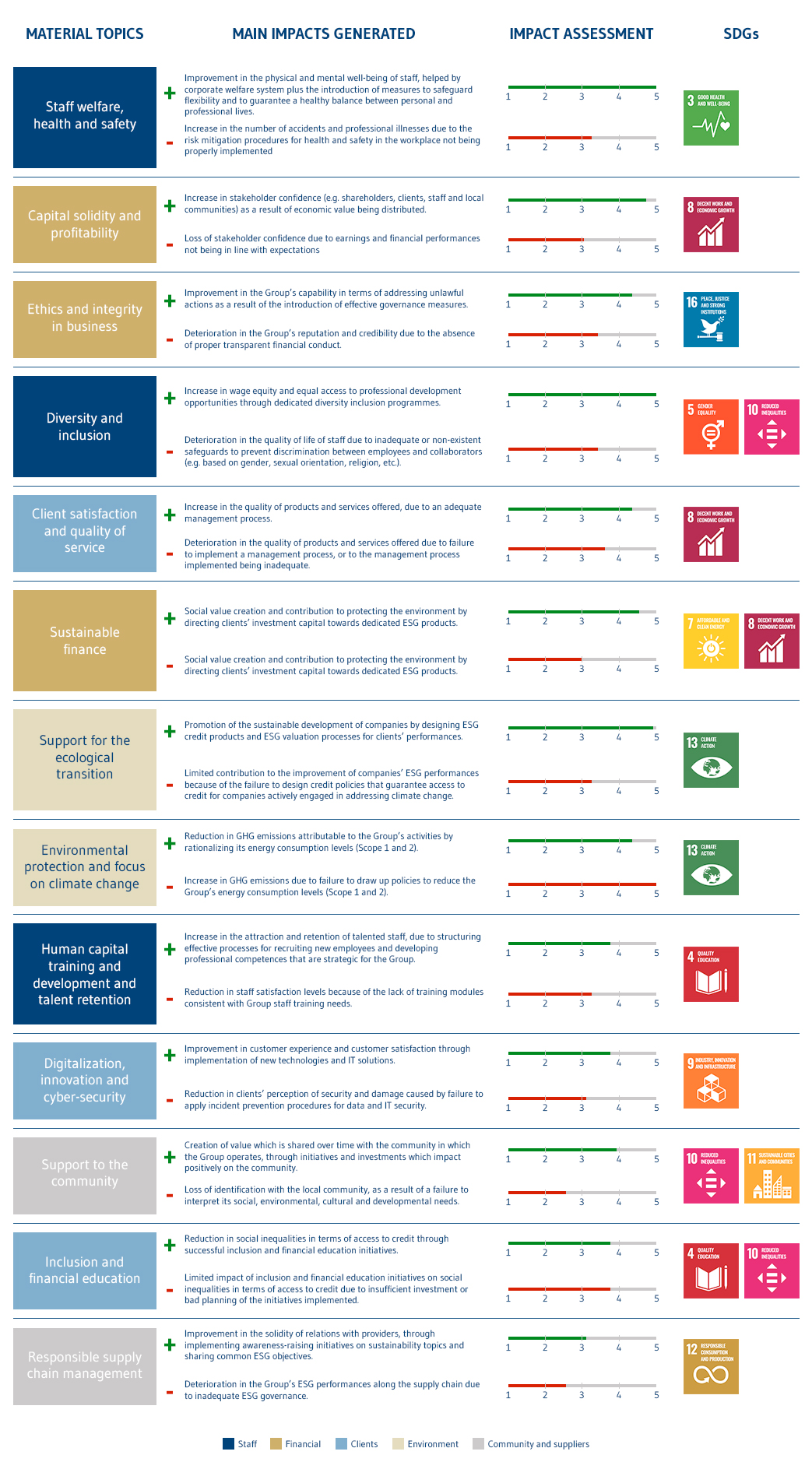Priorities
Active listening to stakeholders and business priorities: their combination helps us map the group’s strategic issues
The definition of priority (or material) issues is an essential step not only in non-financial reporting but also for the management of risks and for strategic sustainability planning. We identify these themes through the materiality analysis process, which is based on stakeholder engagement activities.
The material themes are all the aspects that reflect the significant economic, environmental and social impacts of the organisation or which could greatly influence stakeholders’ decisions.
The methodology used for the Group’s materiality analysis has been revised in accordance with the provisions of GRI 3 – Material Topics 2021, mandatory as from 1 January 2023, which requires assessment of the most significant impacts, positive and negative, generated by the Group on society and its surrounding environment (impact materiality).
The Mediobanca Group’s materiality analysis process for 2024 was structured in three steps:
- Step 1: review of potentially material issues for the Mediobanca Group, beginning with those identified for the previous year, and subsequently updated based on the main positive and negative impacts generated by the Group in the course of its business. These activities have been performed relative to benchmarks for both the internal and external situations.
- Step 2: certain major stakeholders were involved, in order to assess the Group’s economic, social and environmental impacts – effective or potential, positive or negative. In particular the engagement has been developed in two ways: by sending an online questionnaire to the different categories involved and to the Group’s senior management; and by conducting interviews with the representatives of the relevant internal units to assess the new impacts identified (the assessments of the impacts identified by the previous analysis have been updated in desk mode).
- Step 3: the results of the shareholder engagement process were compiled, and the list of material topics was shared with and approved by the competent committees and the BoD.
A list of the material topics identified is provided below, in decreasing order based on their impact materiality scores
The Group is convinced of the importance of taking on board the opinions and expectations of all its stakeholders, that is, of all those who have some kind an interest in the company’s activities. The Group comes into contact with a large number and wide variety of stakeholders in the course of its operations. The Group comes into contact with many and varied stakeholders in the course of its business, and for purposes of convenience it has been decided to sub-divide them into a total of eight different categories, for which the most appropriate engagement methods have been identified. The principal initiatives for engagement with stakeholders are summarized in the table below.
Stakeholder engagement channels and methods
| COMMUNITY | SUPPLIERS | INVESTORS AND ANALYSTS | CUSTOMERS |
|
|
|
|
| TRADE UNION ORGANISATIONS | EMPLOYEES | AUTHORITIES AND INSTITUTIONS | PROMOTER AGENTS |
|
|
|
|
